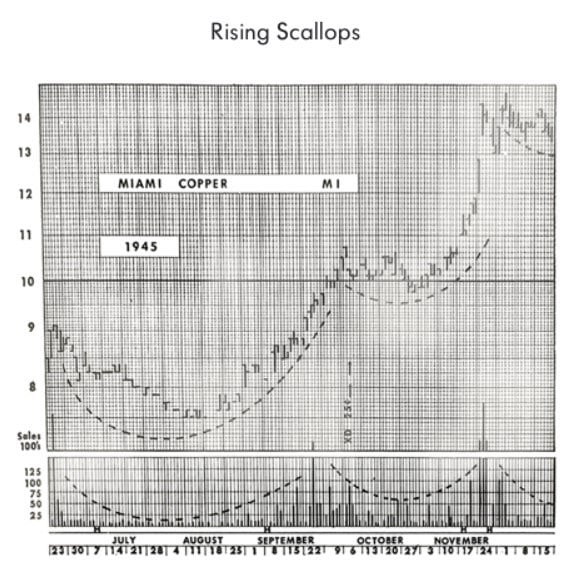AK here with this week’s Macro Musings.
The February issue of our Macro Intelligence Report (MIR) is coming out in a few days. We’re going to be covering our top stocks for the Asian S-Curve theme discussed in yesterday’s email. Some of these names have 10x+ potential over the next five years. And that’s not an exaggeration. With our 60-day money-back guarantee, there’s no risk for you to come along for the ride. Don’t miss your chance. Subscribe to the MIR by clicking here.
Recent Articles —
Asian Explosion — We reiterate the idea of the S-curve and how the Asian middle class will become the growth engine for the global economy.
The US Dollar — Wondering what’s going on with this dollar drop? Be sure to check out our explanation here.
Credit Addiction — Part one of Fallible’s series that digs into credit and debt cycles.
Article I’m reading —
Here’s a great article from Winton on the history of technical analysis going all the way back to 18th century Imperial Japan.
“Night and morning attacks”; “advancing three soldiers”; “counter attack lines” ‒ candlestick chart patterns with such names hint that technical trading first started at a time when the military held sway. And in Edo-period Japan, traders applied technical analysis as they sought to profit from Osaka’s rice futures market.
Munehisa Homma, a speculator and effectively an early behavioural economist, produced some of the earliest descriptions of technical patterns in writings such as The Fountain of Gold—The Three Monkey Record of Money. He attributed trends and reversals to the human emotions exhibited in market behaviour. In Japan, candlestick charts used by technical traders are known as Sakata charts, a fitting reference to Homma’s hometown.
Across the East China Sea, Confucian manuals published rules of thumb to help forecast price movements in the bustling markets of Imperial China. Essential Business, one such manual, explained how “no item will remain expensive for over one hundred days and no item will remain cheap for one hundred days”. The same guides purported to show merchants how to identify market manipulation, understand relationships between price and volume, and handily how to develop a honed Confucian disposition.
These are just two of the many precursors of modern technical analysis that academics and practitioners have traced; other examples date back to ancient Babylon.
Podcast I’m listening to —
If you haven’t listened already, LinkedIn co-founder Reid Hoffman’s podcast Masters of Scale is worth checking out. Here’s a quick description:
How do companies grow from zero to a gazillion? Masters of Scale unfolds like a music-infused detective story as legendary Silicon Valley investor / entrepreneur Reid Hoffman tests his theories with famous founders. Guests include Facebook’s Mark Zuckerberg & Sheryl Sandberg, Netflix’s Reed Hastings, Google’s Eric Schmidt, and Spanx’s Sara Blakely.
One of the most popular episodes is the series’ very first with Airbnb’s Brian Chesky:
If you want your company to truly scale, you first have to do things that don’t scale. Handcraft the core experience. Get your hands dirty. Serve your customers one-by-one. And don’t stop until you know exactly what they want. That’s what Brian Chesky did. As CEO of Airbnb, Brian’s early work was more akin to a traveling salesman. He takes us back to his lean years – when he went door-to-door, meeting Airbnb hosts in person – and shares the imaginative route to crafting what he calls an “11-star experience.”
Video I’m Watching —
Here’s a solid interview with JD.com Founder/CEO Richard Liu at Davos. In it he discusses a bit about how he started out and then moves on to describing what he sees as the retail industry.
JD is one of our highest conviction investments at the moment and Richard Liu is a big reason why.
Book I’m Reading —
Essentialism by Greg McKeown is an easy-to-read book that reminds you how important the 80/20 rule is.
It’s very likely that just 20% of what you do each day provides 80% of the results you’re looking for. The goal of an Essentialist is to cut out the extraneous stuff that only serves to sap your energy and time, and to redirect those resources to executing the essential 20% more effectively. The whole idea is to do “less but better”.
Here’s a description of the book from Amazon:
The Way of the Essentialist isn’t about getting more done in less time. It’s about getting only the right things done. It is not a time management strategy, or a productivity technique. It is a systematic discipline for discerning what is absolutely essential, then eliminating everything that is not, so we can make the highest possible contribution towards the things that really matter.
By forcing us to apply a more selective criteria for what is Essential, the disciplined pursuit of less empowers us to reclaim control of our own choices about where to spend our precious time and energy – instead of giving others the implicit permission to choose for us.
Trade I’m looking at —
Twitter is back on our radar again after completing a breakout from its multi-year base.
As regular users of “Fintwit” we can vouch for the value of the platform. Fintwit has done wonders for our business and has been instrumental in connecting us with all sorts of smart people out there in the world of finance.
The stock also has buyout potential. Rumors have been floating around the Street that Salesforce.com might put in a bid.
And to top it off there are other very smart people already long Twitter. David Einhorn from Greenlight Capital thinks 2018 is Twitter’s year, and Andrew Left from Citron Research agrees.
Quote I’m pondering —
Without great solitude, no serious work is possible. ~ Pablo Picasso
Just a friendly reminder to cut the noise and think for yourself.
That’s it for this week’s Macro Musings.
If you’re not already, be sure to follow us on Twitter: @MacroOps and on Stocktwits: @MacroOps. Alex posts his mindless drivel there daily.
Here’s a link to our latest global macro research. And here’s another to our updated macro trading strategy and education.
Your Macro Operator,
AK







